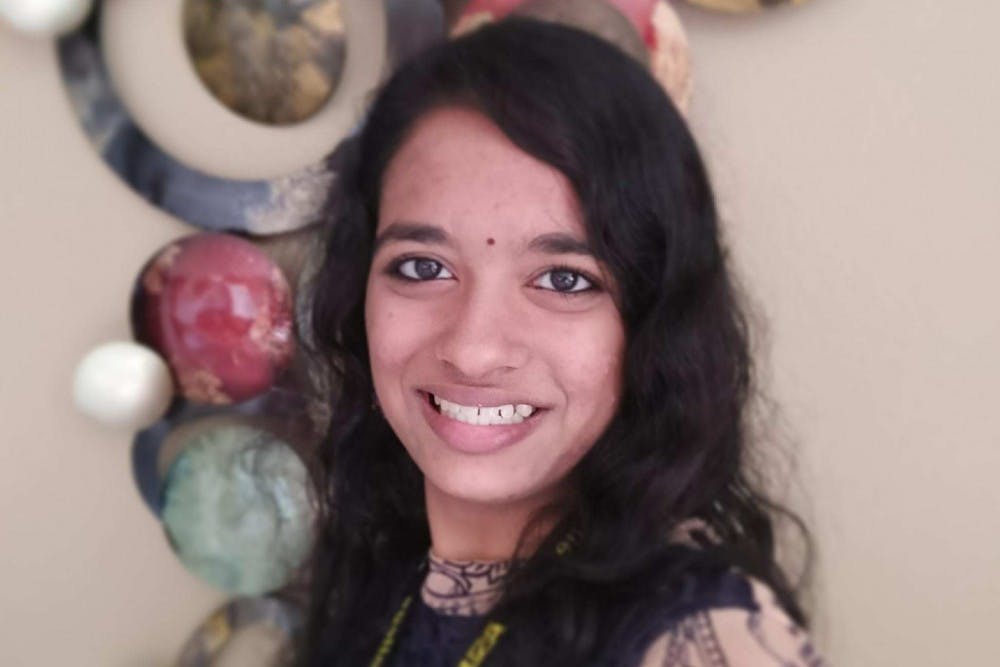The little red dot you see Hindu women wear is meant to control the concentration of energy at the chakra point in the center of our forehead. To me, it was part of my identity.
Back in my Texas elementary school days, it also made me a target.
The bindi on my forehead, a symbol of my Hindu religion, was constantly mistaken for blood.
“Why do you wear it?” I was asked, yet I was too young to know the significance in order to explain it.
“It’s just something part of my religion,” I would answer, but I eventually stopped wearing bindis to school, no matter how much my parents scolded me for it. Sometimes, I would wear the bindi at home, and then discard it as soon as I arrived to school.
In February of second grade, I moved from Cleveland, Ohio, to Plano, Texas, and enrolled in a new school. I had previously never faced difficulties making friends, but in this new school, I was suddenly strange and alien.
The black hair that covered my arms and legs was visible against my brown skin, as opposed to the fine, blonde hair on my classmates’ fair skins. I was ridiculed for it.
I was constantly alone during recess and lunch. I never felt like I had real friends in that school.
The food I ate with my hands was made fun of.
“Why don’t you use silverware?” I was asked.
The day my mom gave me idli, or a steamed ball of dough with curd for lunch, I was asked to get a plastic fork to eat it with. Getting a napkin or going to the bathroom to wash my hands would have sufficed. If my classmates could eat their finger food – pizzas and tacos and sloppy joes – why couldn’t I?
And then came the days when my class started talking about Bloody Mary and scared the living day lights out of me.
My classmates told me the story of Bloody Mary and that if I don’t believe in Jesus or Bloody Mary, Bloody Mary would kill me in the middle of the night, and the walls would be red and oozing with blood.
It traumatized me.
I silently prayed, “I believe in you, Jesus and Bloody Mary, but please forgive me if I don’t pray to you. I will pray to Ganapathi and my gods.”
“If you don’t believe in Jesus, you’ll go to hell.” A statement they hounded me with rather frequently.
I’d say, “Just because I don’t believe in Jesus shouldn’t mean I’m going to hell. I believe in my gods, and you believe in yours.”
Once a year, my school had a multicultural night. The week leading up to that night, the trophy cases in the halls would be filled with artifacts from different people’s religions. I was always proud of India’s section in the trophy cases. I’d proudly stare at it whenever I passed by it in the halls that week.
But my classmates ridiculed my gods. They looked at the little gold statue of Lord Ganesha and said, “Ew, why isn’t he wearing any clothes? Why is his head an elephant? Why is he so fat?”
I would try to explain that Ganapathi is wearing a dhoti, and the male gods are seldom depicted wearing shirts. They might wear armor or silk shawls, but never shirts.
I tried to explain the origin story of Ganesha and why he has an elephant head.
I could not explain why Ganesha is fat, but I tried to say that not all the gods of my religion are like that.
My classmates never understood. And when my family moved to India in May 2008, it was bittersweet. While I was sad to leave the US, where I had spent the majority of my childhood, I was glad I would finally no longer be a target of bullying in school.
“I’ll finally have friends,” I thought to myself.
When one thinks of racial and cultural groups facing a hard time in society, one hardly ever thinks about prejudice towards Indians. Ridiculing a person just because he or she is different is not okay. Making fun of another person’s religion is not okay. Attempting to convert them, or make them feel bad for believing in the gods they do believe in, is not okay.
I strongly believe that as long as we each focus on being good and doing good in the world, our religion and backgrounds should not matter.
My experiences didn’t deter me from wanting to return to the US for college. While I was initially hesitant and worried I might relive my old nightmares again, discovering that the university I chose to join had such a strong multicultural community brought me relief beyond words.
Today, I am glad that at Arizona State University, I can wear Indian clothes to class if I want to switch it up on a random day, and almost no one would bat an eye. In fact, if anything, people might compliment me on my kurti or chudidhar.
I bring my packed Indian food from home to college and sometimes eat it in the downtown Barrett suite between classes, and no one complains.
I wear a bindi if I want, and nobody asks about it.
Reach the reporter at ranjanivk@gmail.com or follow @RanjPhoenix on Twitter.
Like The State Press on Facebook and follow @statepress on Twitter.




